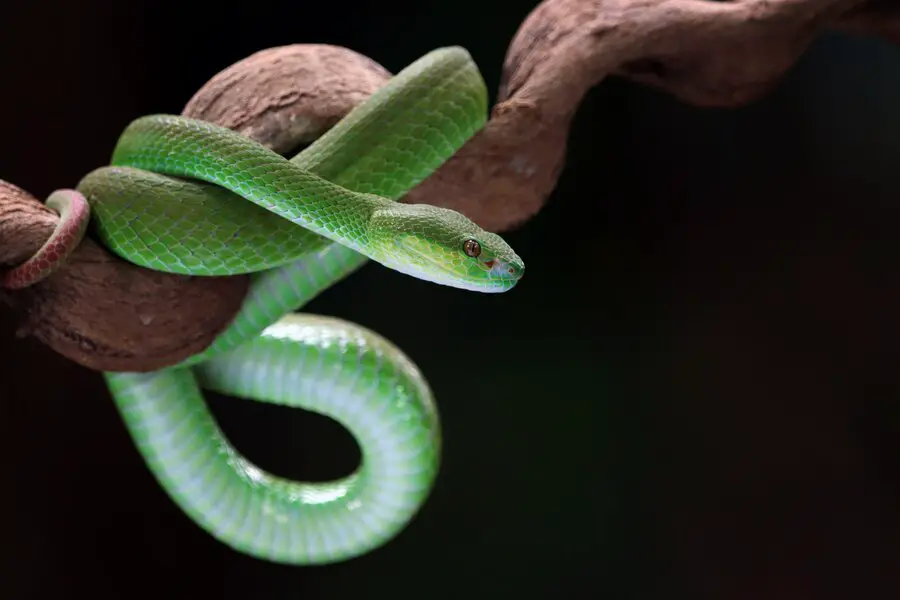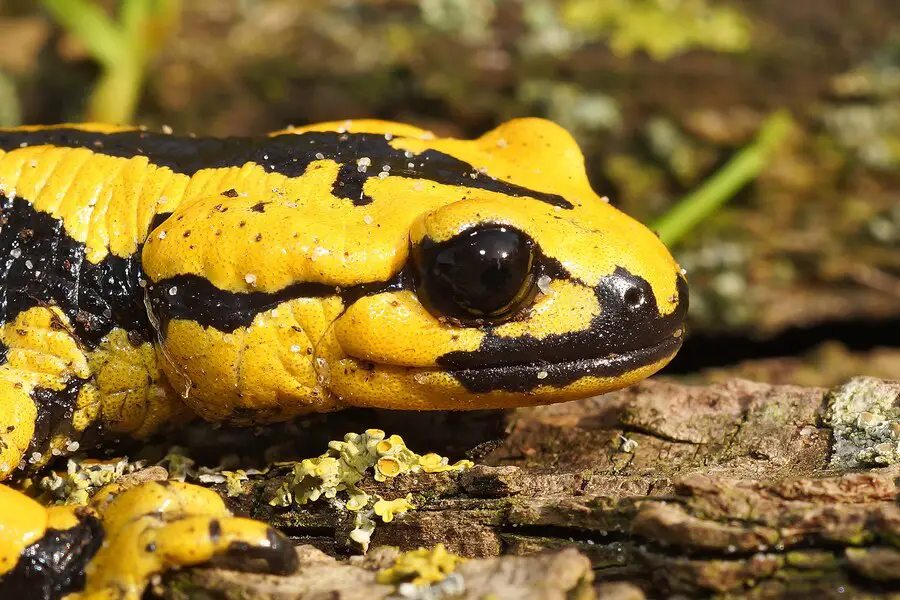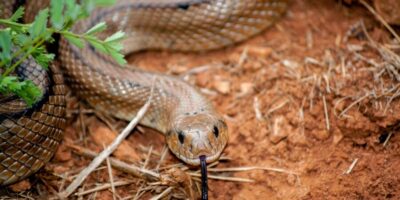Ball pythons are super popular as pet reptiles. These amazing creatures are known for their docile nature, making them a great choice for reptile enthusiasts of all levels. Ball pythons are native to sub-Saharan Africa and are named after their tendency to curl up into a tight ball when feeling threatened or stressed. They have beautiful patterns and colors, which adds to their appeal as pets. With proper care and handling, ball pythons can live long and healthy lives, becoming beloved members of many households.
Understanding the bathroom habits of ball pythons is crucial for their overall health and well-being. As reptile owners, it’s important to be aware of their natural digestion process and the frequency of their bowel movements. By knowing what is normal for ball pythons, we can identify any potential issues or changes in their bathroom habits, such as constipation or diarrhea, and take appropriate action.
Monitoring their bathroom habits allows us to ensure that they are receiving the proper care, diet, and environment they need to thrive. So, let’s dive into the fascinating world of ball python bathroom habits and give our scaly friends the best care possible.
Normal Frequency of Bowel Movements
Ball pythons are known for having a low metabolism. Unlike some other reptiles, they don’t require frequent meals or have high energy levels. This low metabolic rate is due to their natural adaptation to survive in environments with limited food availability. It allows them to conserve energy and go for extended periods without eating. Understanding their low metabolism is essential for providing them with the appropriate feeding schedule and ensuring their overall health and well-being. So, let’s make sure we give our ball pythons the right care and keep their unique metabolism in mind.
Ball pythons have a unique digestion process that can result in infrequent bowel movements. After they eat, it takes some time for their bodies to fully process and break down the food. This slow digestion process means that they don’t need to eliminate waste as frequently as other animals. It’s completely normal for ball pythons to have infrequent bowel movements, especially after a substantial meal. However, it’s important to keep an eye on their overall health and monitor any changes in their bathroom habits. If you ever have concerns, it’s always a good idea to consult with a reptile veterinarian.
On average, ball pythons tend to have bowel movements about once every 1-2 weeks. However, this can vary depending on factors such as their age, size, and individual metabolism. Some ball pythons may have less frequent bowel movements, especially during periods of fasting or when they’re adjusting to a new environment. It’s important to remember that each snake is unique, so as long as they are eating regularly, maintaining a healthy weight, and showing no signs of discomfort or bloating, infrequent bowel movements shouldn’t be a cause for concern.
Factors Affecting Bowel Movements
Temperature and humidity levels are crucial for maintaining a healthy environment for ball pythons. The ideal temperature range for their enclosure is typically around 75-85°F (24-29°C) on the warm side and 70-75°F (21-24°C) on the cool side. It’s important to provide a temperature gradient so they can thermoregulate by moving between the warmer and cooler areas.
As for humidity, it should be kept around 50-60% for most of the time, but it should be increased to 70-80% during shedding periods to assist with the shedding process. Regular monitoring and adjustments are necessary to ensure their comfort and well-being.
When it comes to feeding ball pythons, it’s important to establish a regular feeding schedule. Younger ball pythons typically eat every 5-7 days, while adults may eat every 7-10 days. It’s best to offer them appropriately sized prey items, such as mice or rats, that are about the same width as the thickest part of their body. It’s essential to provide a varied diet to ensure they receive a balanced nutritional intake.
This can include different types of rodents, such as mice, rats, and even chicks. Always remember to thaw frozen prey items thoroughly before offering them to your snake. And of course, keep an eye on their body condition and adjust the feeding schedule as needed to maintain a healthy weight.
Stress or changes in the environment can have an impact on ball pythons. These snakes are known to be sensitive to their surroundings, and sudden changes can cause stress. It’s important to provide them with a secure and stable environment to help them feel safe and comfortable. Avoid loud noises, excessive handling, and sudden temperature or humidity fluctuations. When making any changes to their enclosure or routine, do so gradually to allow them time to adjust. Additionally, providing hiding spots and enrichment items, like branches or foliage, can help reduce stress and promote their natural behaviors. Remember, a calm and stress-free environment is key to keeping your ball python happy and healthy.
Signs of a Healthy Digestive System
Healthy poop in ball pythons is typically firm, well-formed, and brown. It should have a slight sheen to it and hold its shape. The size of the poop will vary depending on the size of the snake and the size of the meal they recently consumed. It’s important to note that ball pythons may occasionally have urates, which are white or slightly yellowish solid waste products. However, if you notice any abnormalities like diarrhea, blood, or mucus in their poop, it could be a sign of digestive issues or other health concerns.
It’s crucial to monitor any changes or abnormalities in your ball python’s behavior, appearance, or bodily functions. Regularly checking their poop, shedding patterns, appetite, and overall activity level can help you identify any potential health issues early on.
Changes in poop consistency, color, or frequency can be indicative of digestive problems or infections. Any sudden weight loss, loss of appetite, or lethargy should also be closely monitored. By staying vigilant and observant, you can catch any potential problems and seek proper veterinary care if needed. Remember, early detection and intervention can greatly improve the chances of a positive outcome for your snake’s health and well-being.
Tips for Promoting Regular Bowel Movements

To provide a suitable enclosure for your ball python, it’s important to create proper temperature and humidity gradients. Aim for a warm side temperature of around 88-92°F (31-33°C) and a cooler side temperature of around 78-82°F (25-28°C). Use a thermostat-controlled heating pad or heat lamp to achieve these temperatures. Maintain a humidity level of 50-60% in the enclosure by misting regularly or using a reptile humidifier. It’s also crucial to offer hiding spots on both the warm and cool sides of the enclosure to allow your snake to regulate their body temperature.
As for feeding, establish a consistent schedule and offer appropriately sized prey items. Remember to match the prey size to the width of the thickest part of your snake’s body. This ensures they can swallow their food comfortably. Providing the right environment and feeding schedule will help keep your ball python healthy and happy
Encouraging exercise and providing hiding spots are important for the well-being of your ball python. These snakes are naturally active and benefit from regular movement. You can promote exercise by providing branches, logs, or other climbing structures in their enclosure. This allows them to explore and stretch their muscles. Additionally, offering hiding spots, such as caves or snug hides, gives them a sense of security and comfort.
This is crucial for reducing stress and promoting natural behaviors. Remember to provide a balance between exercise and rest, as ball pythons also enjoy spending time in their hiding spots. Creating an enriching environment will help keep your snake engaged and happy
Common Issues
It’s important to address potential problems such as constipation or diarrhea in ball pythons. If you notice constipation, it could be due to dehydration or an inadequate diet. Ensure that your snake has access to fresh water at all times and consider offering a warm water soak to help stimulate bowel movements. If constipation persists, it’s best to consult with a reptile veterinarian for further guidance.
On the other hand, if you observe diarrhea, it could be a sign of digestive issues or an underlying health problem. In such cases, it’s crucial to monitor your snake closely and seek veterinary attention if the diarrhea continues or worsens. Remember, maintaining a balanced diet, proper hydration, and seeking professional advice when needed are key to keeping your ball python healthy.
If you’re facing issues like constipation or diarrhea with your ball python, there are a few steps you can take with proper care and veterinary guidance. For constipation, ensure your snake is well-hydrated by providing fresh water and consider offering a warm water soak. If the problem persists, it’s best to consult with a reptile veterinarian who can provide specific advice tailored to your snake’s needs. In the case of diarrhea, monitor your snake closely and seek veterinary attention. They’re really good at figuring out what’s causing the issue and giving the right treatment for your snake.Remember, professional guidance combined with attentive care is key to resolving these issues and ensuring your ball python’s well-being.
Conclusion
It’s crucial to monitor your ball python’s bathroom habits and take action if any issues arise. Keeping an eye on their stool consistency and frequency can provide valuable insights into their overall health. If you notice any abnormalities, such as constipation or diarrhea, don’t hesitate to seek professional advice from a reptile veterinarian.
They’re experts at finding the root cause and providing the best treatment for your snake. Remember, being proactive and attentive to your snake’s bathroom habits can help ensure their well-being and happiness.




